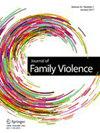中国LGBT +人群中的家庭暴力:来自全国法院裁决的结果
IF 2.2
3区 心理学
Q1 FAMILY STUDIES
引用次数: 0
摘要
摘要目的近几十年来,家庭暴力一直是一个新兴的研究领域,主要针对女同性恋、男同性恋、双性恋和变性人(LGBT +)。虽然有一些研究讨论了西方国家LGBT +夫妇的家庭暴力,但很少有人关注中国背景下的家庭暴力模式。在此背景下,本研究试图阐明法院判决记录的针对LGBT +个体的家庭暴力的普遍性和特点,并审视司法系统对这些暴力案件的反应。方法本研究采用定性研究方法,以法院判决为主要数据来源。具体来说,数据是从发布中国各级法院判决书的官方网站收集的。运用内容分析和话语分析作为分析手段,揭示LGBT +群体家庭暴力的潜在模式,并考察司法系统对LGBT +群体保护的回应。结果通过对法院判决的分析,发现共有53起涉及LGBT +个体的家庭暴力案件。这些案件约占所有涉及LGBT +人群的刑事案件的10%。在这些案件中,有40起案件涉及LGBT +亲密伴侣的暴力行为。暴力可以进一步分为不同的类别,包括分手暴力、性暴力和日常生活中的暴力。这种暴力的后果通常导致死亡或身体伤害。该研究调查的另一种形式的暴力是在法律伙伴关系中观察到的,例如异性恋丈夫和他的女同性恋妻子之间。这类暴力还往往导致严重后果,包括对受害者造成死亡或身体伤害。此外,研究中讨论的一个值得注意的家庭暴力案例涉及亲子关系。本研究揭示了在中国家庭关系背景下,LGBT +个体遭受暴力的多重来源。虽然LGBT +个人可以利用刑法来保护他们作为公民的权利,但法律对同性关系的承认仍然很少。然而,这一法律承认可能会改变受家庭暴力困扰的同性家庭的状况。本文章由计算机程序翻译,如有差异,请以英文原文为准。
Domestic Violence among LGBT + People in China: Results from a national court rulings review
Abstract Purpose Domestic violence has been an emerging area of study in recent decades for lesbians, gay men, bisexuals, and transgender people (LGBT +). While some research discussed domestic violence among LGBT + couples in Western countries, very little attention was paid to the patterns of domestic violence in the Chinese context. Against this backdrop, this study sought to elucidate the prevalence and distinctive features of family violence against LGBT + individuals that have been recorded by court rulings, as well as to scrutinize the responses of the judicial system towards these cases of violence. Methods This study utilized a qualitative research approach, relying on court rulings as the primary data source. Specifically, data were collected from the official website that publishes judgments from courts at all levels of China. Content analysis and discourse analysis were employed as analytical techniques to uncover the underlying patterns of family violence among LGBT + people and examine the responses of the judicial system concerning the protection of LGBT + individuals. Results Through an analysis of the court rulings, the findings reveal a total of fifty-three cases of family violence involving LGBT + individuals. These cases constitute approximately ten percent of all criminal cases concerning the LGBT + population. Among these cases, forty cases involve violence perpetrated by LGBT + intimate partners. The violence can be further classified into distinct categories, including break-up violence, sexual violence, and violence occurring in daily life. The consequences of such violence typically result in fatalities or physical injuries. Another form of violence examined in the study is observed within legal partnerships, such as between a heterosexual husband and his lesbian wife. This type of violence also tends to lead to severe outcomes, including deaths or bodily harm to the victim. Furthermore, one noteworthy case of family violence discussed in the research involves a parent–child relationship. Conclusions This study uncovers multiple sources of violence experienced by LGBT + individuals within the context of domestic relationships in China. While LGBT + individuals can employ criminal law to protect their rights as citizens, the legal recognition of same-sex relationships remains rare. Yet, this legal recognition could change the situation in same-sex families troubled by family violence.
求助全文
通过发布文献求助,成功后即可免费获取论文全文。
去求助
来源期刊

Journal of Family Violence
Multiple-
CiteScore
7.00
自引率
10.50%
发文量
121
期刊介绍:
The Journal of Family Violence (JOFV) is a peer-reviewed publication committed to the dissemination of rigorous research on preventing, ending, and ameliorating all forms of family violence. JOFV welcomes scholarly articles related to the broad categories of child abuse and maltreatment, dating violence, domestic and partner violence, and elder abuse. Within these categories, JOFV emphasizes research on physical violence, psychological violence, sexual violence, and homicides that occur in families. Studies on families in all their various forms and diversities are welcome. JOFV publishes studies using quantitative, qualitative, and/or mixed methods involving the collection of primary data. Rigorous systematic reviews, meta-analyses, and theoretical analyses are also welcome. To help advance scientific understandings of family violence, JOFV is especially interested in research using transdisciplinary perspectives and innovative research methods. Because family violence is a global problem requiring solutions from diverse disciplinary perspectives, JOFV strongly encourages submissions from scholars worldwide from all disciplines and backgrounds.
 求助内容:
求助内容: 应助结果提醒方式:
应助结果提醒方式:


